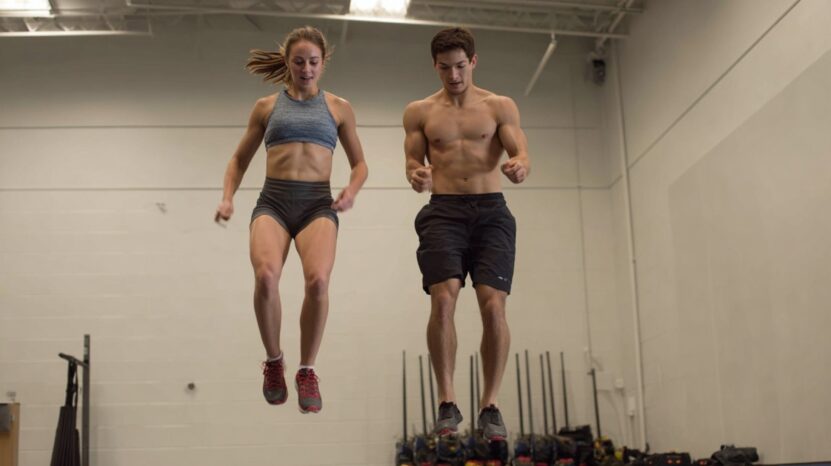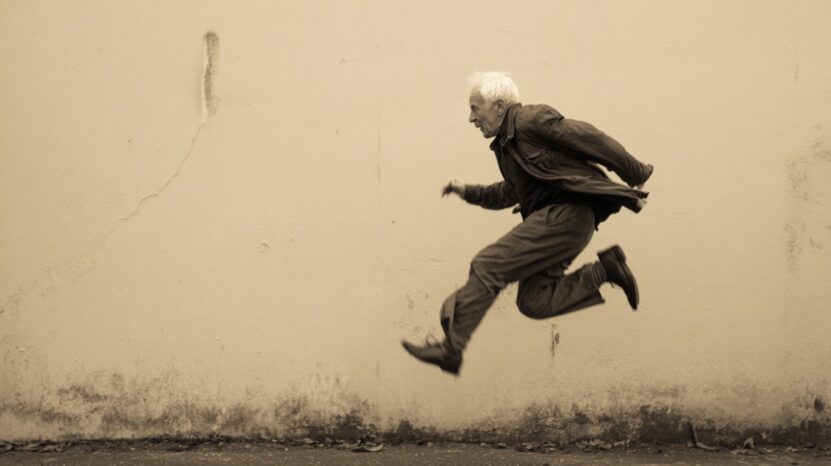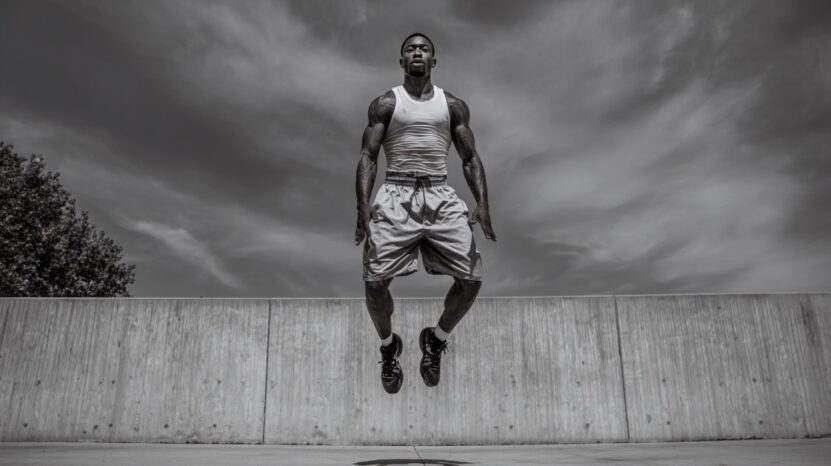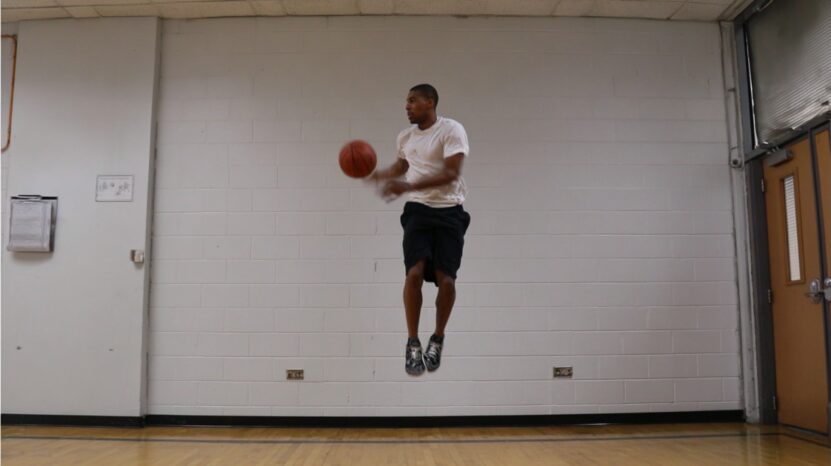Vertical jump measures how high an athlete can propel themselves off the ground using leg power. It reflects explosive strength, speed, and coordination, making it one of the most useful assessments of athletic potential.
Coaches and trainers often rely on this measure to evaluate lower-body power in both professional and recreational settings. Basketball, volleyball, and football all depend heavily on vertical jumping ability, yet even general fitness enthusiasts benefit from monitoring their progress.
A higher jump often signals better muscle activation and training efficiency.
Vertical Jump Norms by Gender
Men generally achieve higher vertical jump measurements because of greater muscle mass, higher testosterone levels, and a larger proportion of fast-twitch muscle fibers. These factors contribute to stronger contractions and more explosive force during takeoff.
On average, male athletes achieve between 16 and 20 inches (41–50 cm), while elite jumpers can surpass 40 inches (102 cm).
Women typically record jumps between 12 and 16 inches (31–40 cm), and top performers often exceed 30 inches (76 cm).

For clarity, the following bullet points summarize average and elite jump ranges for both genders:
- Average: 16–20 inches (41–50 cm)
- Elite: 28–40+ inches (71–102+ cm)
Women:
- Average: 12–16 inches (31–40 cm)
- Elite: 20–30+ inches (51–76+ cm)
Numbers reflect physiological differences, yet they do not define potential. Training methods focusing on lower-body strength, plyometric exercises, and proper jumping mechanics can significantly improve results for both men and women.
Consistency, intensity, and recovery all play major roles in reaching elite performance levels.
Percentile-Based Comparison
Percentile-based comparisons create a clearer picture of how individuals perform relative to a larger population. Instead of focusing only on average values, percentiles highlight how athletes rank in specific groups based on performance distribution.
For example, a man in the 80th percentile might record around 28 inches, while a woman in the same percentile could reach approximately 22 inches.
- Men often have a higher percentage of fast-twitch fibers, producing greater power output.
- Testosterone increases muscle hypertrophy and power, influencing explosive strength.
- Limb length, hip width, and body mass distribution affect jumping mechanics.
- Efficient muscle recruitment patterns improve takeoff velocity and control.
Despite inherent variations, targeted resistance training, sprint work, and plyometrics allow athletes of all genders to enhance vertical jump performance. Progress depends on structured routines, consistent effort, and attention to form.
Over time, proper development can narrow observed differences, demonstrating that improvement remains within reach for anyone committed to training effectively.
Vertical Jump Norms by Age
@jumpsbychi How high should your standing vertical jump by based on your age? #verticaljump #basketball #volleyball #verttrainer ♬ original sound – Chi
Age plays a significant role in determining vertical jump performance. Physical capability, muscle composition, and neuromuscular coordination all change gradually over the years.
While younger athletes often demonstrate the highest explosive power, consistent training can help older individuals maintain or even improve their ability.
Vertical jump performance serves as a reliable reflection of functional strength and mobility throughout adulthood.
Men
Men typically exhibit higher vertical jump heights during their twenties due to peak muscle mass and optimal hormonal balance.
As age progresses, reductions in testosterone and neuromuscular efficiency gradually impact explosive strength.
Even so, training can offset much of this decline.
Below is a general guideline illustrating performance standards for men in different age groups:
| Age Group | Poor | Average | Excellent |
|---|---|---|---|
| 20–29 | ~18 in | 20–22 in | >24 in |
| 30–39 | ~17 in | 17–20 in | >20 in |
| 40–49 | ~14 in | 14–17 in | ≈18 in |
| 50–59 | ~11 in | 11–15 in | ≈15 in |
Younger men often rely on natural speed and strength, while older athletes must focus on technique and consistency. Proper recovery, nutrition, and progressive overload in training can maintain performance across decades.
View this post on Instagram
Women
Women follow similar performance patterns, though hormonal and muscular differences influence jump outcomes. Vertical jump ability often peaks between the ages of 20 and 30, before declining gradually.
Proper strength and plyometric training, however, can help sustain performance longer.
The following chart summarizes the typical vertical jump ranges for women by age group:
| Age Group | Poor | Average | Excellent |
|---|---|---|---|
| 20–29 | ~14 in | 16–18 in | >20 in |
| 30–39 | ~13 in | 14–16 in | >18 in |
| 40–49 | ~11 in | 13–15 in | >16 in |
| 50–59 | ~9 in | 11–13 in | >14 in |
Training strategies focusing on muscle activation, coordination, and explosive control are essential for maintaining vertical power as women age.
Strength circuits, resistance bands, and jump mechanics drills all contribute to long-term performance retention.
Effects of Aging on Jump Performance

Aging naturally affects the body’s ability to produce explosive force, but targeted exercise can significantly slow this process.
- Loss of fast-twitch fibers limits quick power generation.
- Lower testosterone and growth hormone levels impact muscle recovery and repair.
- Slower signaling between the brain and muscles affects timing and coordination.
Despite these challenges, regular resistance training and dynamic exercises can improve both jump height and overall functionality.
Adequate sleep, hydration, and balanced nutrition also play crucial roles. Many older athletes have proven that proper conditioning can maintain athletic capacity well into later life stages.
Sport-Specific Vertical Jump Standards
Different sports emphasize jumping ability to varying degrees.
| Sport | Average | Elite Level |
|---|---|---|
| NBA (Men) | 28–32 in | 35–40+ in |
| Volleyball (Men) | 24–28 in | 32–36 in |
| Volleyball (Women) | 20–24 in | 26–30 in |
| NFL Combine (WR/DB) | 25–30 in | 35–42 in |
| Basketball Dunking | ~28–32 in needed | |
| General Fitness Goals | 20+ in (men), 15+ in (women) |
Each sport values jumping power differently. Basketball and volleyball prioritize vertical explosion, while football scouts use vertical jump tests to evaluate lower-body strength.
In general fitness contexts, consistent progress in jump height demonstrates effective conditioning and agility.

Methods of Measuring Vertical Jump
Several approaches exist for assessing vertical jump height, and accuracy depends on the method chosen.
A standing vertical jump measures takeoff power without forward momentum, while a running vertical jump allows a step or two for additional lift.
- Simple and cost-effective, using chalk marks to measure the reach difference.
- Popular in sports facilities for its adjustable vanes that record exact height.
- Used in laboratories to measure jump kinetics and ground reaction force.
- Modern tools offer good precision when properly calibrated.
Consistency in testing conditions, surface, footwear, and rest intervals ensures reliable comparisons between sessions or athletes.
Factors Influencing Vertical Jump Height

Performance in vertical jumping depends on several interconnected factors.
- Age, gender, and body composition significantly affect baseline jump capability.
- A higher ratio of fast-twitch muscle fibers enables a stronger takeoff force.
- Individuals with experience in sprinting, resistance, or plyometric workouts often display superior results.
- Proper jump form, use of arm swing, and controlled body alignment maximize efficiency.
- Footwear, testing surface, and measurement tools can slightly influence recorded results.
Progress is achieved through regular lower-body strength training, sprint intervals, and explosive drills such as:
Correct form during takeoff and landing minimizes injury risk and ensures consistent improvements in jump height.
Summary
Vertical jump testing remains a valuable benchmark for athleticism and progress tracking.
Measurement norms offer guidance, not restrictions, allowing athletes to evaluate performance relative to age, gender, or sport.
With consistent training and attention to technique, nearly anyone can enhance their explosive capability and achieve significant gains over time.

